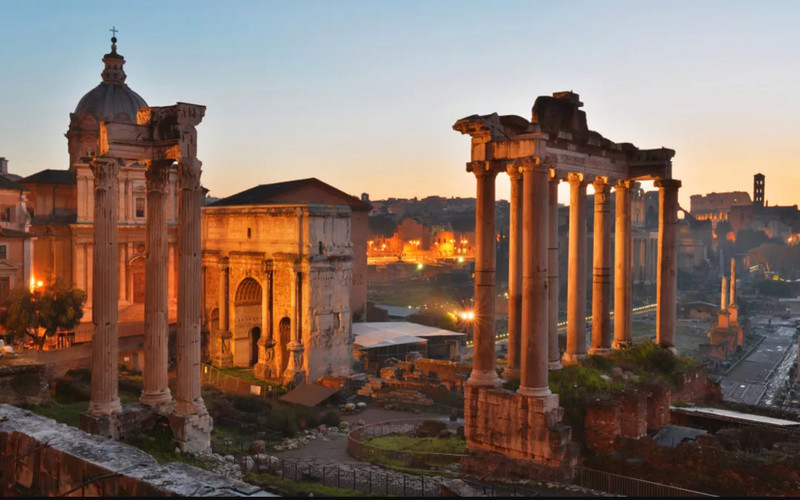The Cradle of the Roman Empire

Italy’s historical narrative is intricately woven into the fabric of the Roman Empire, an influential civilization that left an indelible mark on the course of history. The genesis of this empire was the city of Rome, founded in 753 BC, which eventually burgeoned into the capital of a vast realm spanning Europe, Africa, and the Middle East. This dominion’s lasting influence is evident in areas such as law, architecture, and engineering.
The Iconic Colosseum
Among the enduring symbols of ancient Rome stands the colossal Colosseum, an immense amphitheater that witnessed epic gladiatorial contests, chariot races, and grand spectacles. Completed in AD 80, this architectural marvel accommodated up to 80,000 spectators and employed groundbreaking concrete construction techniques for its time.
The Renaissance Revival
The 14th-century Italian Renaissance sparked a cultural and artistic renaissance that reverberated across Europe. Italy was the epicenter of this transformative era, with visionaries like Leonardo da Vinci, Michelangelo, and Raphael shaping the artistic landscape. Scientific, literary, and philosophical advancements during this period left an enduring impact on Western civilization.
The Leaning Marvel of Pisa
Pisa’s renowned Leaning Tower not only captivates with its architectural marvel but also stands a testament to Italy’s historical engineering prowess. Initiated in the 12th century, the tower’s tilt, caused by unstable soil, has become its distinctive feature, surviving the centuries and fascinating visitors with its unique charm.
The City of Canals: Venice
Venice, a city perched on a lagoon in the Adriatic Sea, is celebrated for its intricate network of canals and breathtaking architecture. A maritime power during the Middle Ages and Renaissance, Venice’s trade routes stretched across the Mediterranean, adding to its historical significance.
The Splendor of the Vatican City
Italy’s historical tapestry includes the world’s smallest independent state, the Vatican City. Nestled within Rome, it serves as the spiritual center of the Roman Catholic Church and the residence of the Pope. St. Peter’s Basilica and the Sistine Chapel, adorned with Michelangelo’s “The Creation of Adam,” stand as treasures of human artistry and devotion.
The Vesuvian Catastrophe
The catastrophic eruption of Mount Vesuvius in AD 79 left an indelible mark on Italy’s history. Burying Pompeii and Herculaneum under layers of volcanic ash, the eruption preserved these cities for centuries, offering invaluable insights into daily life during the Roman Empire.
The Birth of Modern Italy
Italy, once a mosaic of independent states and kingdoms, underwent the process of unification, known as the Risorgimento, in the 19th century. Pivotal figures like Giuseppe Garibaldi, Count Cavour, and Victor Emmanuel II played crucial roles in establishing the Kingdom of Italy in 1861, a momentous turning point in the nation’s history.
The Majestic Roman Pantheon
The Roman Pantheon, erected in the 2nd century AD, stands as a testament to ancient Rome’s architectural brilliance. Distinguished by its massive dome, the Pantheon boasted the largest unreinforced concrete dome in the world for over 1,800 years, showcasing unparalleled engineering and architectural excellence.
The Enigma of the Shroud of Turin
In Turin, the enigmatic Shroud of Turin, bearing the image of a man with crucifixion wounds, continues to intrigue. Revered by some as the burial shroud of Jesus Christ, its mysterious origins have sparked intense scientific scrutiny and debate, adding a layer of fascination to Italy’s historical narrative.
The Enduring Legacy of Roman Law
The legal framework we recognize today traces its roots to ancient Rome. The Twelve Tables, a set of laws established by the Romans, laid the groundwork for modern legal principles, including concepts like “innocent until proven guilty” and “equality before the law.”
The Ingenious Mind of Leonardo da Vinci
Leonardo da Vinci, born in Vinci, Italy, in 1452, stands as one of history’s greatest polymaths. Excelling in art, science, engineering, and anatomy, his notebooks contain visionary sketches and ideas, showcasing his inventive spirit that was centuries ahead of his time. Italy’s historical journey is a captivating odyssey through time, marked by extraordinary achievements in art, architecture, engineering, and culture. From the grandeur of ancient Rome to the brilliance of the Renaissance, Italy’s contributions to human civilization resonate across the ages. These fascinating facets of Italy’s history serve as a poignant reminder of the enduring impact this beautiful country has had on the world, emphasizing the importance of preserving and celebrating its rich heritage.